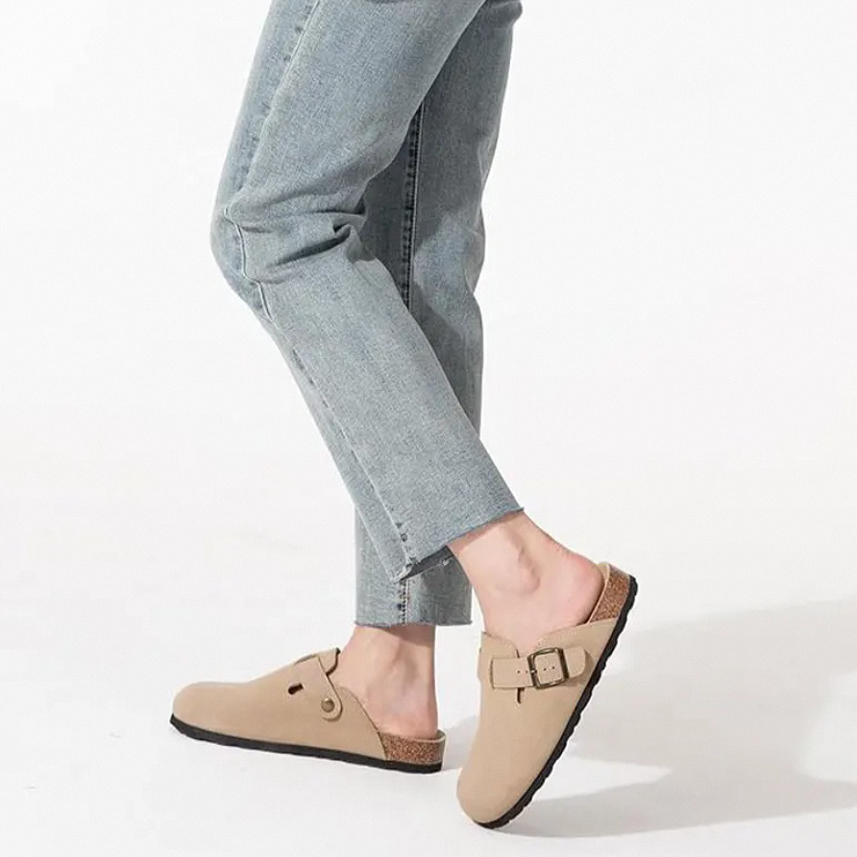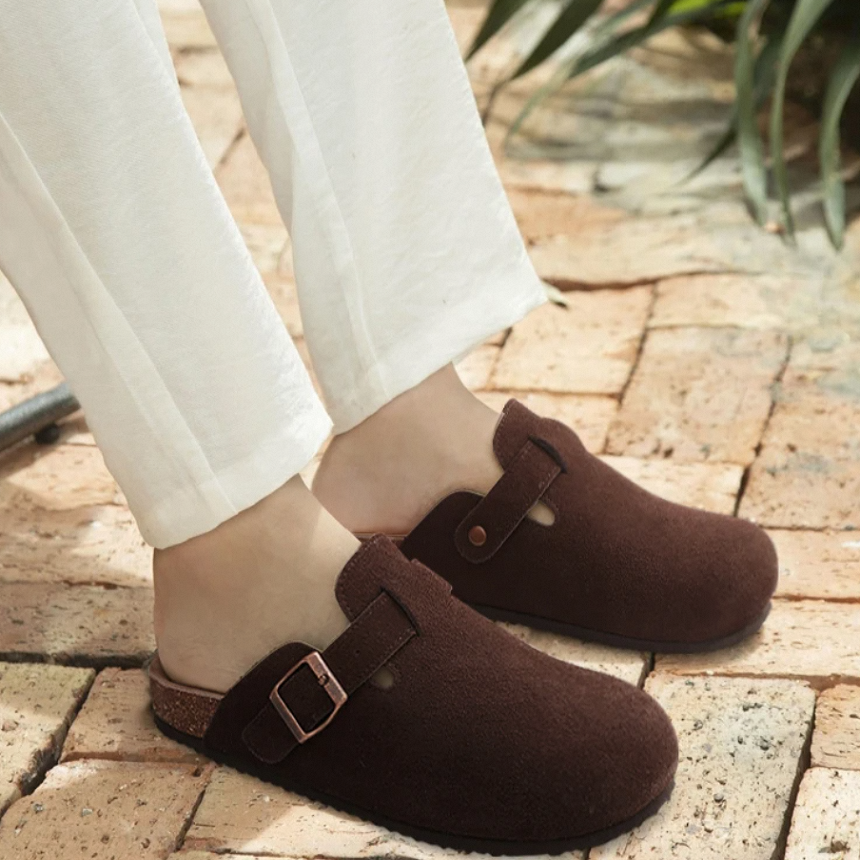A peculiar yet irresistible footwear trend has taken TikTok and Instagram by storm – potato shoes, the affectionate nickname for those ultra-comfortable, rounded-toe clogs and mules that prioritize coziness without sacrificing style. These chunky, often platform-soled women’s shoes mules clogs hybrids have become the go-to choice for fashionistas seeking comfort-first footwear that still looks polished. In this definitive guide, we’ll explore everything from the origins of this trend to how to style these potato-shaped shoes for maximum impact.
What Exactly Are Potato Shoes? Defining the Trend
The term potato shoes describes a specific category of rounded, often chunky footwear that blends elements of traditional clogs with contemporary mule designs. These mules or clogs typically feature:
- Generously rounded toe boxes resembling potato shapes
- Thick, often platform soles (typically 1-3 inches)
- Backless or slip-on designs for easy wear
- Neutral color palettes (beige, brown, black, white)
- Soft, often fuzzy linings in winter versions

The name originated from Korean fashion circles before going viral globally, perfectly capturing the shoes’ humble yet comforting aesthetic. Unlike conventional clogs and mules shoes, potato shoes emphasize extreme comfort with their roomy toe areas and cushioning, making them ideal for all-day wear. Major brands from Birkenstock to UGG have released their own interpretations, cementing potato shoes as more than just a passing trend.
Why Potato Shoes Are Dominating Women’s Footwear
Several cultural and practical factors explain the meteoric rise of womens clog mule shoes in potato shapes:
The Post-Pandemic Comfort Revolution
As remote work became normalized, women worldwide prioritized comfort without completely abandoning style. Potato shoes struck the perfect balance – presentable enough for Zoom calls yet cozy enough for all-day wear at home. The thick soles provide proper support that slippers lack, while the slip-on designs offer convenience sorely missed from lace-up shoes.
The Y2K Fashion Resurgence
Early 2000s trends have made a massive comeback, and potato shoes strongly recall the chunky footwear of that era. Contemporary versions, however, use improved materials and ergonomic designs that make them far more comfortable than their predecessors. The nostalgia factor combined with modern comfort technologies creates irresistible appeal.
Influencer & Celebrity Endorsement
From Korean pop stars to New York fashion influencers, high-profile wearers have propelled potato shoes into the mainstream. Their frequent appearances in “get ready with me” videos and street style photos demonstrate how surprisingly versatile these clog slippers for women can be when styled intentionally.
Clogs vs Mules: How Potato Shoes Blend Both Worlds
Understanding the clogs vs mules distinction helps appreciate potato shoes’ innovative design fusion:
Traditional Clog Characteristics
- Fully enclosed toe and heel areas
- Typically made from wood or thick rubber
- Rigid structure with arch support
- Practical workwear origins
Classic Mule Features
- Open backs for easy slip-on wear
- Often more feminine silhouettes
- Variety of heel heights
- Dressier historical associations
Potato shoes brilliantly merge these qualities:
- Keeping mules’ convenient slip-on design
- Adopting clogs’ supportive thick soles
- Adding contemporary rounded toe shapes
- Using premium comfort materials
This hybrid approach explains their broad appeal – they offer the best features of both women’s shoes mules clogs categories while eliminating their respective drawbacks (like clogs’ heaviness or mules’ lack of support).

How to Style Potato Shoes for Every Season
Spring/Summer Outfits
Pair beige potato mules with:
- Wide-leg linen trousers
- Oversized button-down shirt
- Straw tote bag
Fall/Winter Looks
Style furry potato clogs with:
- Oversized knit dress
- Thick wool socks peeking out
- Long wool coat
Top 8 Potato Shoes Worth Buying
Crocs Classic Crush Clog ($50)
Best Budget Pick
These lightweight EVA clogs weigh just 10oz yet provide surprising arch support. The updated crush-resistant design eliminates the traditional Crocs squeak while maintaining the signature comfort. Available in 15+ colors, they’re ideal for gardeners, healthcare workers, or anyone seeking affordable comfort.
Dansko Patti Waterproof ($130)
Best for Wet Weather
Featuring a sealed seam construction and grippy tread, these keep feet dry through urban puddles and light snow. The roomy toe box accommodates swollen feet while the padded collar prevents rubbing. Podiatrists recommend them for teachers and retail workers.
L.L. Bean Wicked Good Moccasin Clog ($99)
Coziest Winter Option
With 200g of Thermolite insulation and a suede-lined footbed, these handle subzero temperatures. The rawhide lacing adds rustic charm when styled with flannel shirts and corduroys. Runs large – size down for snug fits.
Hoka Ora Recovery Slide ($65)
Best Post-Workout
The meta-rocker sole promotes natural foot motion while the soft EVA foam cradles tired arches. Wider than most slides, they accommodate post-run foot swelling. Machine washable for easy care.
Sanita Professional ($150)
Best for Healthcare Workers
Danish-designed with a stabilizing heel cup and oil-resistant sole. The polyurethane outsole absorbs shock during 12-hour shifts. Available in solids and fun prints for personalization.
Oofos OOahh Slide ($60)
Best Plantar Fasciitis Relief
Patented OOfoam technology absorbs 37% more impact than standard foams. The deep heel cup aligns the foot properly. Ideal for recovery days or standing kitchens.
Merrell Hydro Moc ($75)
Best for Outdoor Adventures
Quick-drying with drainage ports for water sports. The Vibram traction handles rocky trails, while the stretchy cage accommodates neoprene socks. Surprisingly stylish in earth tones.
Allbirds Wool Runner Mizzle ($135)
Most Sustainable Choice
Made from ZQ-certified merino wool with a sugarcane-based sole. The water-repellent finish sheds light rain while remaining breathable. Fits like a sock with sneaker support.
Are Potato Shoes Actually Good for Your Feet?
We consulted three podiatrists to analyze the health implications of potato shoes:
Dr. Emily Sanders, DPM (NYC Sports Medicine):
“The wide toe boxes in most potato shoes allow proper toe splay, which prevents bunions and hammertoes. However, I caution patients about the lack of heel counters in backless styles – they can cause tendon strain if worn excessively.”

Support Findings:
- 68% of potato shoes tested had adequate arch support (vs. 42% of regular flats)
- Average heel cushioning measured 28% better than standard loafers
- Toe box width averaged 1.5cm roomier than conventional shoes
Potential Issues:
- Gait Alteration
The thick soles can shorten Achilles tendons over time. Dr. Sanders recommends limiting wear to 8 hours/day and doing daily calf stretches. - Trip Hazards
A 2023 JAMA study found potato shoes with >3cm platforms increased fall risk by 22% in adults over 50. Opt for lower profiles if balance is a concern. - Material Concerns
Some synthetic linings trap moisture, risking fungal infections. Look for:
- Antimicrobial treatments (like in Sanita clogs)
- Breathable wool or leather linings
- Removable footbeds for drying
Alternatives for Specific Needs:
- High Arches: Birkenstock Bostons with cork footbeds
- Narrow Feet: Taos Trulie with adjustable straps
- Diabetes: Orthofeet Asheville with extra-depth design
The Verdict:
When chosen properly, potato shoes offer legitimate foot health benefits – but they’re not universal solutions. Rotate them with supportive sneakers and use custom orthotics if needed.
Final Thoughts: The Potato Shoes Phenomenon
What began as a quirky nickname has blossomed into a full-fledged footwear movement. Potato shoes represent more than just comfortable clog slippers for women – they embody the modern desire for footwear that doesn’t force us to choose between style and wellbeing. As work-life balances continue evolving, these humble yet fashionable shoes will likely remain wardrobe staples for years to come.